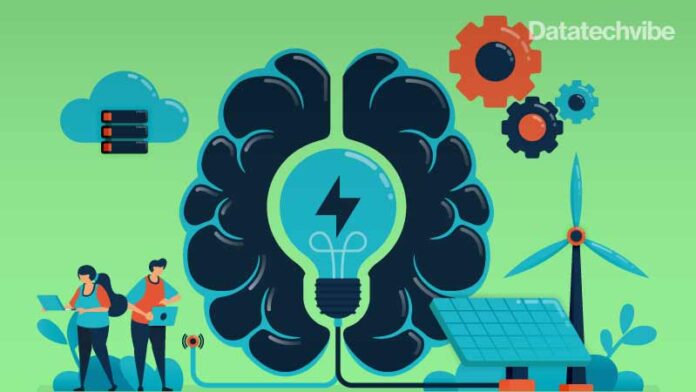Digital technologies – AI in particular – is geared up for the energy transition. A World Economic Forum report, Harnessing AI to Accelerate the Energy Transition, defines the actions needed to unlock AI’s potential in this domain. Meanwhile, the new IPCC report says more action is urgently needed to avert catastrophic long-term climate impacts. With fossil fuels still supplying more than 80 per cent of global energy, the energy sector needs to be at the heart of this action.
Fortunately, renewable energy generation is growing rapidly, driven by falling costs and growing investor interest. But the scale and cost of decarbonising the global energy system remain enormous.
Up until now, most of the energy sector’s transition efforts have focused on new low-carbon infrastructure that will replace legacy carbon-intensive systems. Little effort and investment has focused on the next-generation digital technologies, in particular artificial intelligence (AI). These powerful technologies can be adopted more quickly at larger scales and can become an essential enabler for the energy transition.
Three key trends driving AI’s potential to accelerate energy transition are:
- Energy-intensive sectors including power, transport, heavy industry and buildings are at the beginning of decarbonisation processes, driven by growing consumer demand for rapid reductions in CO2 emissions. The scale of these transitions is huge: BloombergNEF estimates that in the energy sector alone, achieving net-zero emissions will require between $92 trillion and $173 trillion of infrastructure investments by 2050. Even small gains in flexibility, efficiency or capacity in clean energy and low-carbon industry can therefore lead to trillions in value and savings.
- As electricity supplies more sectors and applications, the power sector is becoming
the core pillar of the global energy supply. Ramping up renewable energy deployment to decarbonise the globally expanding power sector will mean more power is supplied by intermittent sources (such as solar and wind), creating new demand for forecasting, coordination, and flexible consumption to ensure that power grids can be operated safely and reliably.
- The transition to low-carbon energy systems is driving the rapid growth of distributed power generation, distributed storage and advanced demand-response capabilities, which need to be orchestrated and integrated through more networked, transactional power grids.
Also Read: ECDC 2021: Choosing The Right Cloud Strategy For Your Business
Navigating these trends presents huge strategic and operational challenges to the energy system and to energy-intensive industries. This is where AI comes in: by creating an intelligent coordination layer across the generation, transmission and use of energy, AI can help energy-system stakeholders identify patterns and insights in data, learn from experience and improve system performance over time, and predict and model possible outcomes of complex, multivariate situations.
AI is already proving its value to the energy transition in multiple domains, driving measurable improvements in renewable energy forecasting, grid operations and optimisation, coordination of distributed energy assets and demand-side management, and materials innovation and discovery. But while AI’s application in the energy sector has proven promising so far, innovation and adoption remain limited. That presents a tremendous opportunity to accelerate transition towards the zero-emission, highly efficient and interconnected energy system we need tomorrow.
AI holds far greater potential to accelerate the global energy transition, but it will only be realised if there is greater AI innovation, adoption and collaboration across the industry.
The World Economic Forum report is aimed at defining and catalysing the actions that are needed. Written in collaboration with BloombergNEF and Dena, the report establishes nine “AI for the energy transition principles” aimed at the energy industry, technology developers and policy-makers. If adopted, these principles would accelerate the uptake of AI solutions that serve the energy transition by creating a common understanding of what is needed to unlock AI’s potential and how to safely and responsibly adopt AI in the energy sector.
Also Read: How AI Is Transforming Renewable Energy
The principles define the actions that are needed to unlock AI’s potential in the energy sector across three critical domains:
Governing the use of AI
Standards – implement compatible software standards and interoperable interfaces.
Risk management – agree upon a common technology and education approach to managing the risks presented by AI.
Responsibility – ensure that AI ethics and responsible use are at the core of AI development and deployment.
Designing AI that’s fit for purpose
Automation – design generation equipment and grid operations for automation and increased autonomy of AI.
Sustainability – adopt the most energy-efficient infrastructure as well as best practices around sustainable computing to limit the carbon footprint of AI.
Design – focus AI development on usability and interpretability.
Enabling the deployment of AI at scale
Data – establish data standards, data-sharing mechanisms and platforms to increase the availability and quality of data.
Education – empower consumers and the energy workforce with a human-centred AI approach and invest in education to match technology and skill development.
Incentives – create market designs and regulatory frameworks that allow AI use cases to capture the value that they create.
Given the urgency, scale, and complexity of the global energy transition, AI can help to accelerate the energy transition while expanding access to energy services, encouraging innovation, and ensuring a safe, resilient, and affordable clean energy system. Now, it is time for industry players and policy makers to lay the foundations for this AI-enabled energy future.









